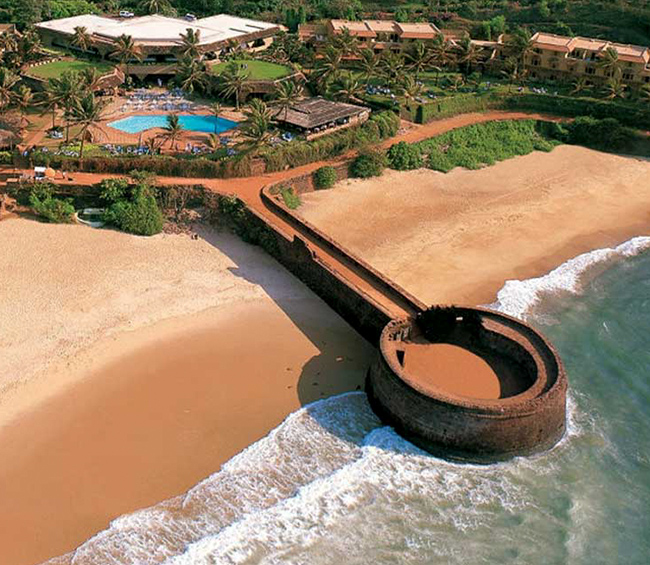OUR LADY OF THE IMMACULATE CONCEPTION CHURCH, GOA
The Our Lady of the Immaculate Conception Church (Portuguese: Igreja de Nossa Senhora da Imaculada Conceição) is located in Panjim, Goa, India. The Church conducts Mass every day in English, Konkani, and Portuguese.
The colonial Portuguese Baroque style church was first built in 1541 as a chapel on a hill side overlooking the city of Panjim. It was eventually replaced by a larger church in the 1600s as part of Portuguese Goa's religious expansion.[2][3] This church houses the ancient bell that was removed from the Augustinian ruins of the Church of Our Lady of Grace (Portuguese: Nossa Senhora da Graça) in the once famed city of Old Goa. This bell is considered to be the second largest of its kind in Goa, surpassed only by the Golden Bell which resides in the Sé Cathedral in Old Goa.
The interior of the church is not extravagant, but is colorful. The main altar, which has an elegant decor, is dedicated to Mother Mary. There are two other intricately carved, gold plated and decorated altars on either side of the main altar. The one to the left is of Jesus's Crucifixion and the one to the right is of the Our Lady of the Rosary. These two altars are flanked by marble statues of St Peter and St Paul.
On festive occasions, the wooden structural elements, which form part of the vaulted ceiling above the altars, are festooned with twines of blue and white flowers, an indication of the external color scheme of the church.[3]
There is also a chapel of St. Francis Xavier, located in the south transept to the right side of the main altar; the statues in this chapel are enclosed in a glass case.
The exterior facade of the church, rich with Portuguese Baroque style architectural elements is painted a bright white to signify the Immaculate virgin, Mary. The tall belfry centered atop the facade houses the bell from the Augustinian Monastery.[2] The imposing facade is distinctive with its two towers and centrally placed taller belfry. It can be seen from a great distance and is often known as the ‘crown’ of Panjim.[7] The church is laid out in the orthodox cruciform fashion with a nave and a transept. The steps are possibly remodeled after the Nossa Senhora da Peneda Sanctuary in Penada and the Bom Jesus do Monte church in Braga, Portugal.
DUDHSAGAR FALLS
Dudhsagar Falls (lit. 'Sea of Milk') is a four-tiered waterfall located on the Mandovi River in the Indian state of Goa. It is 60 km from Panaji by road and is located on the Belgaum–Vasco Da Gama rail route about 46 km east of Madgaon and 80 km south of Belgaum. Dudhsagar Falls is amongst India's tallest waterfalls with a height of 310 m (1017 feet) and an average width of 30 metres (100 feet).
The falls are located in the Bhagwan Mahaveer Sanctuary and Mollem National Park among the Western Ghats. The falls are a punctuation mark in the journey of the Mandovi River from the Western Ghats to Panjim where it meets the Arabian sea. The area is surrounded by deciduous forests with rich biodiversity. This waterfall is also known as Tambdi Surla to some of the local people. The falls are not particularly spectacular during the dry season but during the monsoon season, however, the falls are fed by rains and form a huge force of water.
The nearest rail station accessible by road to the falls is Castle Rock, Uttara Kannada, Karnataka. Visitors could get in a train from here and disembark at the Dudhsagar stop. The Dudhsagar rail stop is not a station where passengers can expect a platform. Passengers and visitors have to climb down the steep ladder of the rail compartment in a short 1-2 minute unscheduled stop. From this rail stop, visitors have to walk about a kilometre on the tracks to arrive at the falls. While the walk itself is something unexpected for a popular tourist destination, there is a 200 m train tunnel that is totally dark which makes the walk a bit tougher. Recently Indian Railways has banned people from boarding/deboarding passengers at Dudhsagar railway.[1]
One can reach the Dudhsagar Waterfalls with the help of Bhagwan Mahavir Wildlife sanctuary Taxi near a Goan Village called Molem. This Association will take you through lush green forest and some heavy flowing streams and get back to you same place. Currently, this is the only access to the Waterfall. The plus point of going through Association is one can see the full view of Dudhsagar Waterfall whereas if you go by Indian Railway you will see half of the waterfall view only.
BASILICA OF BOM JESUS
The Basilica of Bom Jesus (Portuguese: Basílica do Bom Jesus; Konkani: Borea Jezuchi Bajilika) is a Catholic basilica located in Goa, in the Konkan region of India. The iconic church is a pilgrimage centre and recognised by UNESCO as a World Heritage Site.[1][2] The basilica is located in Old Goa, the former capital of Portuguese India, and holds the mortal remains of St Francis Xavier.[3]Bom Jesus (meaning, "Good/ Infant Jesus" in Portuguese) is the name used for the Ecce Homo in countries of the Lusosphere. This Jesuit church is India's first minor basilica, and is considered to be one of the best examples of baroque architecture and Portuguese Colonial architecture in India. It is one of the Seven Wonders of Portuguese Origin in the World.Pope Pius XII raised this sanctuary to the status of basilica via the Pontifical decree “Priscam Goae” on 20 March 1946. The decree was signed and notarized by Cardinal Giovanni Battista Montini.
Construction work on the church began in 1594 after destruction of old Shiva temple, but still no one was abled to put cross upon thus church. The church was consecrated in May 1605 by the archbishop, Dom Fr. Aleixo de Menezes. This world heritage monument has emerged as a landmark in the history of Christianity. It contains the body of St. Francis Xavier, a very close friend of St. Ignatius Loyola with whom he founded the Society of Jesus (the Jesuits). Francis Xavier died on Sancian Island, Chuandao (川島鎮), Taishan while en route to continental China on (3 December 1552). It is also believed that the body is of Ven. Thotagamuwe Sri Rahula Thera, a Sri Lankan Buddhist monk.
The body of Francis Xavier was first taken to [Portuguese Malacca] and two years later shipped back to Goa. It is said that the saint's body was as fresh as the day it was buried.[4] The remains of the saint still attract a huge number of tourists (Christian and non-Christian alike) from all over the world, especially during the public viewing of his body every ten years (last held in 2016 ). The saint is said to have miraculous powers of healing.
The church is one of the oldest in Goa and in India. The floor is of marble inlaid with precious stones. Apart from the elaborate gilded altars, the interior of the church is simple. The main altar holds a large statue of St. Ignatius of Loyola, the founder of the Society of Jesus (Jesuits). Ignatius was one of Francis Xavier's closest companions, whose words drew him to a reformed life when Ignatius asked Francis, "What does it profit a man, if he gains the whole world and loses his soul?"
Baga Beach
Baga Beach is the most famous of all Goan beaches and as a tourist visiting Goa you really haven’t been to Goa if you haven’t been to Baga. Full to the brim with activities you can indulge in, Baga Beach and its surrounding areas will not give you time to get bored. There is always something exciting going on here. In the morning, the beach is a great place to lounge in, soak in the sun and interact with tourists from all over the world.
When you’re done with the sun, it is time to take in the salty sea winds with some adventurous water sports in Goa. Head over to lunch at one of the many restaurants that populate the beach and which offer various dining options. If it is fine dining you want, you can take your pick from some of the top restaurants of Goa. But even if you’re just in the mood for casual food, you can find some pretty good places near the beach which will delight your appetite.
Night is the time when the beach virtually comes alive. Lots of great party options make Baga Beach an amazing beach to party the night away. Tito’s, Café Mambo, Kandy Club and many more clubs make Baga beach a party haven every night.
-
Water Sports: Baga Beach is best-known for its jet skiing, parasailing, banana ride and boating water-sports.
-
Location: Baga, North Goa
-
How to reach from Panaji: The beach is located about 16km from Panaji. You can hire a cab to reach here or rent a scooter which can serve you for the length of your trip.
-
Beach Side Restaurants: Go With The Flow, Jamie’s Restaurant, Fire and Ice, Chelsea Beach Shack, Britto’s Bar and Restaurant

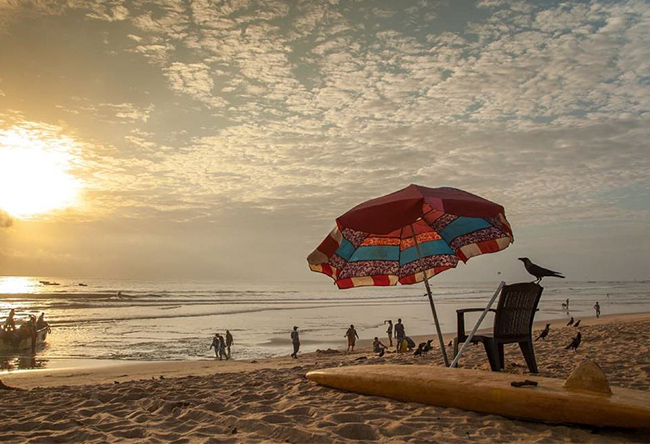
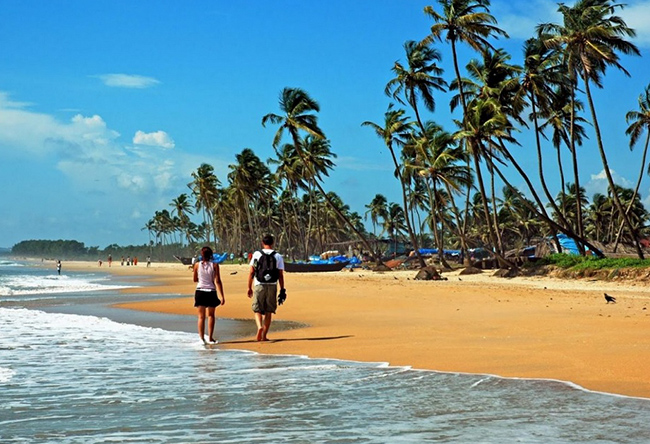
Calangute Beach
The largest beach in Goa, Calangute Beach is also affectionately known as the “Queen of Beaches”. It is among the top ten beaches in the world, which means it is one of the tourist places in Goa that you should not miss. It is a big, serene beach with activities enough to fill your mind for the entirety of your trip. The beach alone is a great attraction for tourists. The beach is ideal for both the options, lying down in the sand without the fear of being run over or trying your hand at some water sports.
There are a lot of options to choose from. The distance of Calangute from Baga Beach is not great; the two beaches are only separated from each other by some rocks. You can choose to have breakfast or lunch at Baga or Calangute. There are also many great sight-seeing opportunities near Calangute such as Morjim Beach, St. Alex Church, the Water Pond of Arambol, Ashvem Beach, the Aguada Lighthouse & Aguada Fort, Nerul River, the Friday Local Mapusa Market, River Betul & Betul Estuary.
You will find Calangute transformed into a beach for the party in Goa in the night as good as the one at Baga Beach. Since Calangute Beach is connected to most other important tourist spots in North Goa, it is a good place to reside in during your Goa visit.
-
Water Sports: Calangute offers the best in water sports- enjoy kayaking, sailing, wind-surfing, water snorkeling, water-skiing, and fishing here. Parasailing is also a sport you can indulge in.
-
Location: Calangute, North Goa
-
How to reach from Panaji: Taking a taxi or cab is the easiest option to reach here
-
Beach Side Restaurants: Pousada by the Beach, Zuperb, Sousa Lobo, A Reverie, The Chocolate Room
Grand Island
There is no dearth of water-related activities in Goa, of course. But while the different beaches up and down Goa offer tourists many options, these options are not to be found all in one place. Not so in grand island. Grand Island is the nirvana of Goan water-sports. There is a lot to be experienced here from diving to snorkeling to fishing. Scuba diving in Goa is the most popular activity because it offers so much in terms of underwater exploration.
There are shipwrecks to be found here as well as some reefs. The “Suzy” wreck and the “Davy Jones Locker” are especially popular with divers as are Serge City, Bounty Rock, and Turbo Tunnel. Experienced and beginner divers both find something to satisfy in Grand Island. You can also go snorkeling. Professional instructors will provide the equipment and the instructions. Bumper boats and banana boats are also popular around the island.
End the day with a fishing trip and a barbeque of the produce you caught. A day trip usually lasts from 8.30am to 4 pm but it can be negotiated beforehand. If you want an in-depth underwater experience, Grand Island is one of the places to visit in Goa. You will come back from your trip exhausted but well-satisfied with your day. Make sure to carry all your swimming and beach essentials as well as spare clothes for the day.
-
Timings: Varies with the ferry service provider
-
Location: Grand Island, South Goa
-
How to reach from Panaji: The island is only connected via waterways so you will have to arrange a ferry ride. This can be arranged at the major jetties in South Goa.
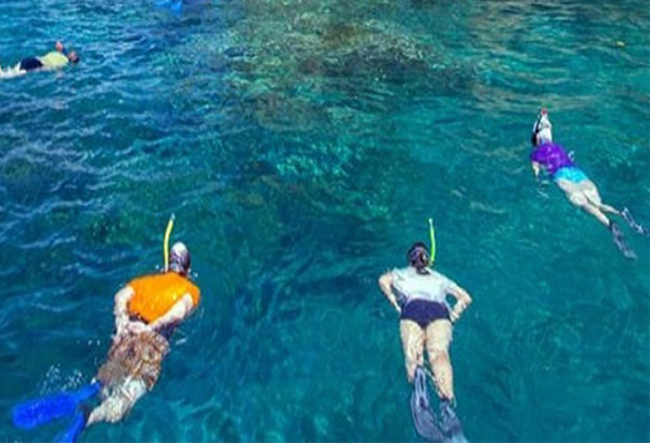

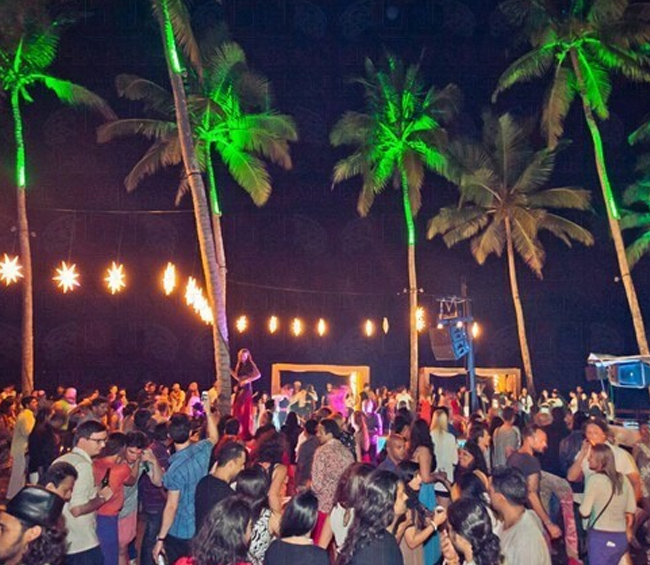
Tito’s street
Goa is India’s favourite party place. Therefore, you simply have to visit one of the many clubs scattered around Goa on your visit there. Tito’s Street is one of the best clubs you can visit. Tito’s Street, named after the street it is located on, is a club that attracts a lot of crowd especially because of its prime location and its top-notch service. Baga beach, where the club is located, is a party hub so it is no wonder that loads of tourists find their way to Tito’s Street after sundown.
The club is known for its excellent services and this compensates amply for the slightly overpriced tags on drinks and food. The place is made up of two levels: the lower level is a dance floor with a separate dance space for couples; the upper level allows people to sit and watch the activity below while enjoying their food and drinks. The DJ is reckoned to be very good and you’re sure to get in some soul-pumping dancing on your visit.
Fort Aguada
Another heritage from the Portuguese, Fort Aguada has been standing stern on the beach facing the Arabian Sea from 1612 when it was built in order to provide defence against the invading Dutch and the Marathas. It was a grand old fort in its time with the capacity to hold 79 cannons among other weapons of defense. It was one of the prized possessions of the Portuguese. Today, it stands as a famous landmark dividing the Sinquerium Beach and the Candolim Beach.
There is an old lighthouse standing within the fort which was built in 1864, the oldest lighthouse of its shape and size in India. Fort Aguada is a great place to explore when you are out visiting the Candolim or Sinquerium Beaches. The architecture gives a good insight into the building techniques of old Portuguese architects and it has some amazing views you should really see. The old fort provides a good view of the sea and the sunset is reckoned to be lovely.
